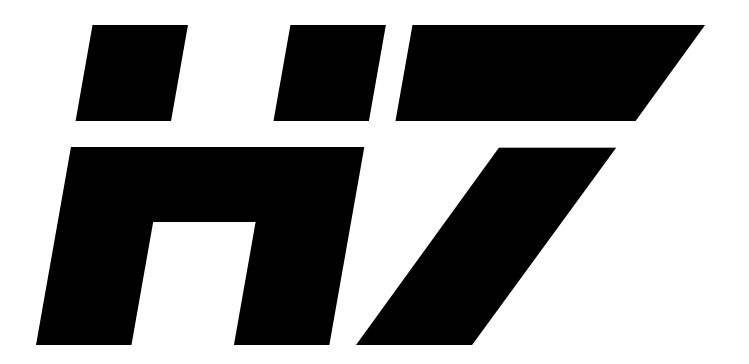Angular-ordered shower¶
Using the angular-ordered shower¶
The angular-ordered shower is switched on by default in all input
files. The setup is stored in the /Herwig/Shower/ directory of the
repository. If not provided by default in an event handler object, it
can explicitly be used by setting the CascadeHandler interface
e.g. as:
set EventHandler:CascadeHandler /Herwig/Shower/ShowerHandler
Evaluating uncertainties¶
The renormalization and factorization scales used in the shower may be varied by changing the value of x in:
set /Herwig/Shower/ShowerHandler:RenormalizationScaleFactor x
set /Herwig/Shower/ShowerHandler:FactorizationScaleFactor x
This factor is applied according to μnewR/F=xμR/F and by
default x=1.0. These scales should be varied in the
same way as their counterparts in the hard process, as is done in
the MuUp.in and MuDown.in input file
snippets. In addition to these scale variations, it is possible
to also vary the hard scale in the shower with:
set /Herwig/Shower/ShowerHandler:HardScaleFactor x
This changes the maximum allowed transverse momentum for shower emissions to pTnewmax. Note that in NLO matched processes, this transverse momentum limit applies to emissions generated by the parton shower splitting kernels only, i.e. it is applied to MC@NLO S events but not POWHEG style S events. Further details of shower uncertainties in a matched context are discussed in the matching section of this tutorial.
On-the-fly reweighting for scale variations¶
On-the-fly reweighting for scale variations can be performed using:
cd /Herwig/Shower
do ShowerHandler:AddVariation NameOfVariation xiR xiF {Hard,Secondary,All}
where NameOfVariation is a string tag identifying the weight in the
extended HepMC record, and xiF and xiR are the repsective factors
multiplying the arguments of the strong coupling and the PDF in the
shower. The last variable identifies whether the reweighting is to be applied
to showering of the hard process (Hard), the showering of secondary
interactions (Secondary) or both of them (All).
The convergence of reweighted distributions can be enhanced by using a detuining factor e.g.:
set SplittingGenerator:Detuning 2.0
at a slight expense in overall run time. Please cite arXiv:1605.08256 when using the shower reweighting feature.
QED and EW radiation¶
Since Herwig 7.3.0 the angular-ordered shower includes QED and EW radiation. QCD, QED and EW radiation can be switched separately using:
set /Herwig/Shower/ShowerHandler:Interactions QCD
set /Herwig/Shower/ShowerHandler:Interactions QED
set /Herwig/Shower/ShowerHandler:Interactions QEDQCD
set /Herwig/Shower/ShowerHandler:Interactions EWOnly
set /Herwig/Shower/ShowerHandler:Interactions ALL
Evolution schemes¶
Since Herwig 7.3.0, three recoil schemes for both final-state and initial-state radiation are introduced: transverse-momentum preserving, virtuality-preserving, and dot-product preserving scheme (default). The evolution scheme can be altered using the commands:
set /Herwig/Shower/ShowerHandler:EvolutionScheme DotProduct
set /Herwig/Shower/ShowerHandler:EvolutionScheme Q2
set /Herwig/Shower/ShowerHandler:EvolutionScheme pT
Spin and soft correlations¶
Since Herwig 7.0 the angular-ordered shower includes spin correlations in the collinear limit, as well as azimuthal correlations for multiple soft gluon emissions.
The spin correlations can be switched off using:
set /Herwig/Shower/ShowerHandler:SpinCorrelations No
The Matchbox module is capable of filling the respective spin density matrices at leading order, while we cannot provide these at NLO at the moment. See the matching section for more details.
Kinematic Reconstruction and POWHEG¶
By default the \tilde{q} shower attempts to preserve the mass of decaying particles during the kinematic reconstruction by separately generating the shower from the hard production process and any decays, for example in the process q\bar{q}\to Z^0 h^0\to q\bar{q} h^0 the mass of the q\bar{q} system, i.e. the Z^0 would be preserved. In some cases when additional QCD radiation has been generated this may not be sensible as it is impossible to tell if the radiation is from the production or decay. In particularly if the system is highly off-shell, for example in pp\to t \bar{b} j in might not be necessary to preserve the mass of the t \bar{b} system which can come from a highly off-shell W^+ boson, and trying to do this can cause problems with QCD radiation particularly in POWHEG processes. In order to switch off the splitting of the hard process into production and decay processes the switch:
set /Herwig/Generators/EventGenerator:EventHandler:CascadeHandler:SplitHardProcess No
can be used. If this is necessary for a process you are simulating please contact us for advice.
In POWHEG processes generated using the Matchbox machinery where this is relevant if the radiation is interpreted as being generated in a decay process this cannot currently be included. In this case either the splitting of hard processes into production and decay needs to be disable as above, or this class of event either vetoed using
set /Herwig/Generators/EventGenerator:EventHandler:CascadeHandler:DecayRadiation VetoEvent
or throwing the radiation away is required
set /Herwig/Generators/EventGenerator:EventHandler:CascadeHandler:DecayRadiation VetoRadiation
None of these switches should be used by default and if you get error messages that they are required for the process you are simulating please contact us for advice on simulating the process.
